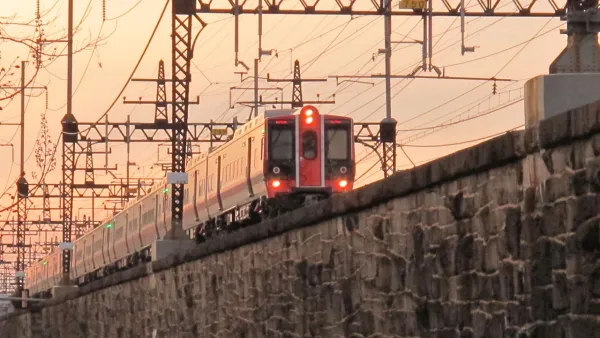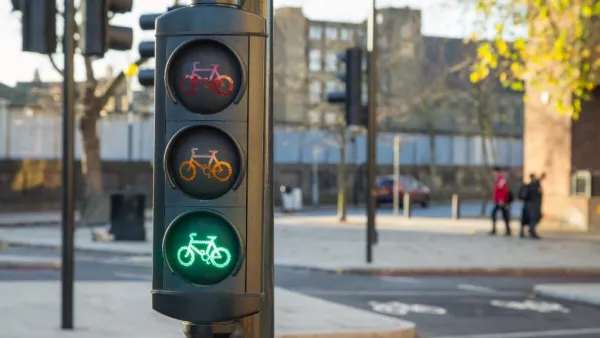"Level of service" is a ranking used by transportation engineers to assess the performance of roads. Streetsblog argues that LOS distorts the development of mobility infrastructure by prioritizing cars over people.
"There's a dirty little secret you should know about San Francisco: It's engineered first and foremost for automobility and will never be able to shed this bias if the traffic engineers are in the driver's seat wielding their traffic analysis tools like bibles. As long as the city continues prioritizing the use of transportation analysis known as Level of Service (LOS), you might as well burn our Transit First policy for warmth.
"On the one hand, LOS is a very simple and blunt metric for understanding the speed that vehicles can move about the city. LOS measures the amount of vehicular delay at an intersection, with A through F grades assigned to increased delay. This measurement is taken during the peak 15 minutes of evening rush hour and if an intersection slips from LOS D to LOS E, traffic managers will try to mitigate the impact, which usually means widening the road, shrinking the sidewalks, removing crosswalks, softening turning angles, and adjusting signal timing to speed the movement of vehicles.
"The result of relying on this poor methodology to shape the growth of cities has a profound affect on the politics of human mobility, privileging the movement of vehicles before the movement of anything else. Quite simply, LOS analysis has given us Phoenix and Atlanta, congestion and ever-longer commutes, and a whole host of ills that accompany reliance on the inefficient use of street space for our cars."
Thanks to George Osner, AICP
FULL STORY: Paradise LOSt (Part I): How Long Will the City Keep Us Stuck in Our Cars?

National Parks Layoffs Will Cause Communities to Lose Billions
Thousands of essential park workers were laid off this week, just before the busy spring break season.

Retro-silient?: America’s First “Eco-burb,” The Woodlands Turns 50
A master-planned community north of Houston offers lessons on green infrastructure and resilient design, but falls short of its founder’s lofty affordability and walkability goals.

Delivering for America Plan Will Downgrade Mail Service in at Least 49.5 Percent of Zip Codes
Republican and Democrat lawmakers criticize the plan for its disproportionate negative impact on rural communities.

Test News Post 1
This is a summary

Test News Headline 46
Test for the image on the front page.

Balancing Bombs and Butterflies: How the National Guard Protects a Rare Species
The National Guard at Fort Indiantown Gap uses GIS technology and land management strategies to balance military training with conservation efforts, ensuring the survival of the rare eastern regal fritillary butterfly.
Urban Design for Planners 1: Software Tools
This six-course series explores essential urban design concepts using open source software and equips planners with the tools they need to participate fully in the urban design process.
Planning for Universal Design
Learn the tools for implementing Universal Design in planning regulations.
EMC Planning Group, Inc.
Planetizen
Planetizen
Mpact (formerly Rail~Volution)
Great Falls Development Authority, Inc.
HUDs Office of Policy Development and Research
NYU Wagner Graduate School of Public Service





























